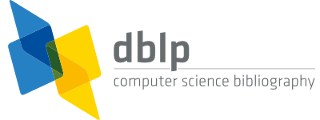


default search action
ACM SIGCSE Bulletin, Volume 32
Volume 32, Number 1, March 2000
- Lillian (Boots) Cassel, Nell B. Dale, Henry MacKay Walker, Susan M. Haller:

Proceedings of the 31st SIGCSE Technical Symposium on Computer Science Education, SIGCSE 2000, Austin, Texas, USA, March 7-12, 2000. ACM 2000, ISBN 1-58113-213-1 [contents]
Volume 32, Number 2, June 2000
- Mordechai Ben-Ari:

How to Get a Good Review. 4-6 - C. Dianne Martin:

Debunking the puppy baron culture. 7 - Don Gotterbarn

 :
:
The education and licensing of software professionals: the myth of "a perfected science" considered harmful. 8-9 - John A. N. Lee:

Emulators of "historic machines". 10-11 - Tony Clear:

Practitioner education - degrees of difference? 11-12 - John T. Gorgone:

A new IS graduate curriculum model - after eighteen years. 13-14 - Nell B. Dale:

Reflections on past research: part II. 14-16 - Renée McCauley:

"Free source" software - what a blessing! 16-17 - Deborah Knox:

SIGCSE endorses a new journal on educational resources in computing. 17-18 - Henry MacKay Walker:

Notes on grading. 18-19 - Judith L. Gersting, Frank H. Young:

Experiences with ethical issues. 20-21 - Erkki Mäkinen, Markku Siermala:

Restricted universe data structures. 22-24 - Renée A. McCauley, Bill Z. Manaris:

An information resource for computer science educators. 25-29 - Essam M. Arif:

A methodology for teaching object-oriented programming concepts in an advanced programming course. 30-34 - Helene Gelderblom

 :
:
OOPtutor: a CBL system for introductory object-oriented programming. 35-38 - Annegret Goold, Russell Rimmer:

Factors affecting performance in first-year computing. 39-43 - M. Afzal Bhatti:

Visual tool for teaching synchronization problems in operating systems. 44-45 - Gordana Jovanovic-Dolecek

 , Víctor H. Champac:
, Víctor H. Champac:
CGTDEMO - educational software for the central limit theorem. 46-48 - Ana Rosso, Marcela Daniele:

Our method to teach algorithmic development. 49-52 - Amparo López Gaona:

The relevance of design in CS1. 53-55 - Michele Jacobsen

 , Rob Kremer, Mildred L. G. Shaw:
, Rob Kremer, Mildred L. G. Shaw:
Experiments with distance learning in software engineering graduate courses. 56-59 - J. Mark Pullen, Eugene Norris, Mark Fix:

Teaching C++ in a multi-user virtual environment. 60-64 - Crescencio Bravo, Miguel A. Redondo, Manuel Ortega

 , José Bravo:
, José Bravo:
DOMOSIMCOL: a simulation collaborative environment for the learning of domotic design. 65-67 - Ali Elkateeb, Ala Awad:

A WWW-based multimedia center for learning data communications - phase 1. 68-73 - Stephen Schaub:

Teaching Java with Graphics in CS1. 71-73 - James W. McGuffee

 :
:
Defining computer science. 74-76 - Torben Lorenzen:

Publish your Excel grade book on the Web. 77-78 - Milan E. Soklic:

Impact of computing platforms on the performance of the asymmetric traveling salesman problem. 79-81 - Ming-Sun Li, Marcus Wright:

On a modified nine-tails problem. 82 - Eric Roberts:

Computing education and the information technology workforce. 83-90
Volume 32, Number 3, September 2000
- Jorma Tarhio, Sally Fincher, Daniel Joyce:

Proceedings of the 5th Annual SIGCSE Conference on Innovation and Technology in Computer Science Education, ITiCSE 2000, Helsinki, Finland, June 11-13, 2000. ACM 2000, ISBN 1-58113-207-7 [contents]
Volume 32, Number 4, December 2000
- Michael R. Williams:

Do we teach computer science as religion or as history? 4-5 - Don Gotterbarn

 :
:
On being a UCITArian: winning the race to the bottom. 6-7 - C. Dianne Martin:

More on the "dark side" of computing. 8-9 - John A. N. Lee:

History in computer science education: across the curriculum initiatives. 9-10 - Tony Clear:

Competition versus cooperation: models for computer education? 11-12 - John T. Gorgone:

CSAB authorizes visits to test IS/IT proposed accreditation criteria. 13-14 - Renée McCauley:

Computer science education links - what next? 14-15 - Deborah Knox:

A preview of the premier issue of JERIC. 15-16 - Henry MacKay Walker:

Balancing the forest and the trees in courses. 17-18 - Judith L. Gersting, Frank H. Young:

Experiences with ethical issues: part 2. 18-19 - David Ginat:

Placement calculations. 20-21 - Dale Shaffer:

Internet-based distance learning: a multi-continental perspective. 22-23 - Wim Pijls:

LR and LL parsing: some new points of view. 24-27 - Amos O. Olagunju:

The role of scientific discovery in teaching and learning of computer science. 28-31 - Jarmo Siltaneva, Erkki Mäkinen:

A note on the expected distribution of degrees in random binary trees. 32-33 - AbdulMalik S. Al-Salman, Jacob Adeniyi:

Computer science education in a Saudi Arabian university: a comparative study of its B.Sc. program. 34-39 - Victor Matos, Rebecca Grasser:

RELAX - the relational algebra pocket calculator project. 40-44 - Donna S. Reese:

Using multiplayer games to teach interprocess communication mechanisms. 45-47 - Cristóbal Pareja-Flores, J. Ángel Velázquez-Iturbide:

Local versus comprehensive assignments: two complementary approaches. 48-51 - Norman Jacobson:

Using on-computer exams to ensure beginning students' programming competency. 53-56 - Scott Grissom:

A pedagogical framework for introducing Java I/O in CS1. 57-59 - Doug Baldwin:

Some thoughts on undergraduate teaching and the Ph.D. 60-62 - Paul T. Tymann, G. Michael Schneider:

Modern software development concepts: a new philosophy for CS2. 63-65 - Michael J. Bossé, N. R. Nandakumar:

Real-world problem-solving, pedagogy, and efficient programming algorithms in computer education. 66-69 - Mohammad Khalid Hamza, Bassem A. Alhalabi, David M. Marcovitz:

Creative pedagogy for computer learning: eight effective tactics. 70-73

manage site settings
To protect your privacy, all features that rely on external API calls from your browser are turned off by default. You need to opt-in for them to become active. All settings here will be stored as cookies with your web browser. For more information see our F.A.Q.


 Google
Google Google Scholar
Google Scholar Semantic Scholar
Semantic Scholar Internet Archive Scholar
Internet Archive Scholar CiteSeerX
CiteSeerX ORCID
ORCID














